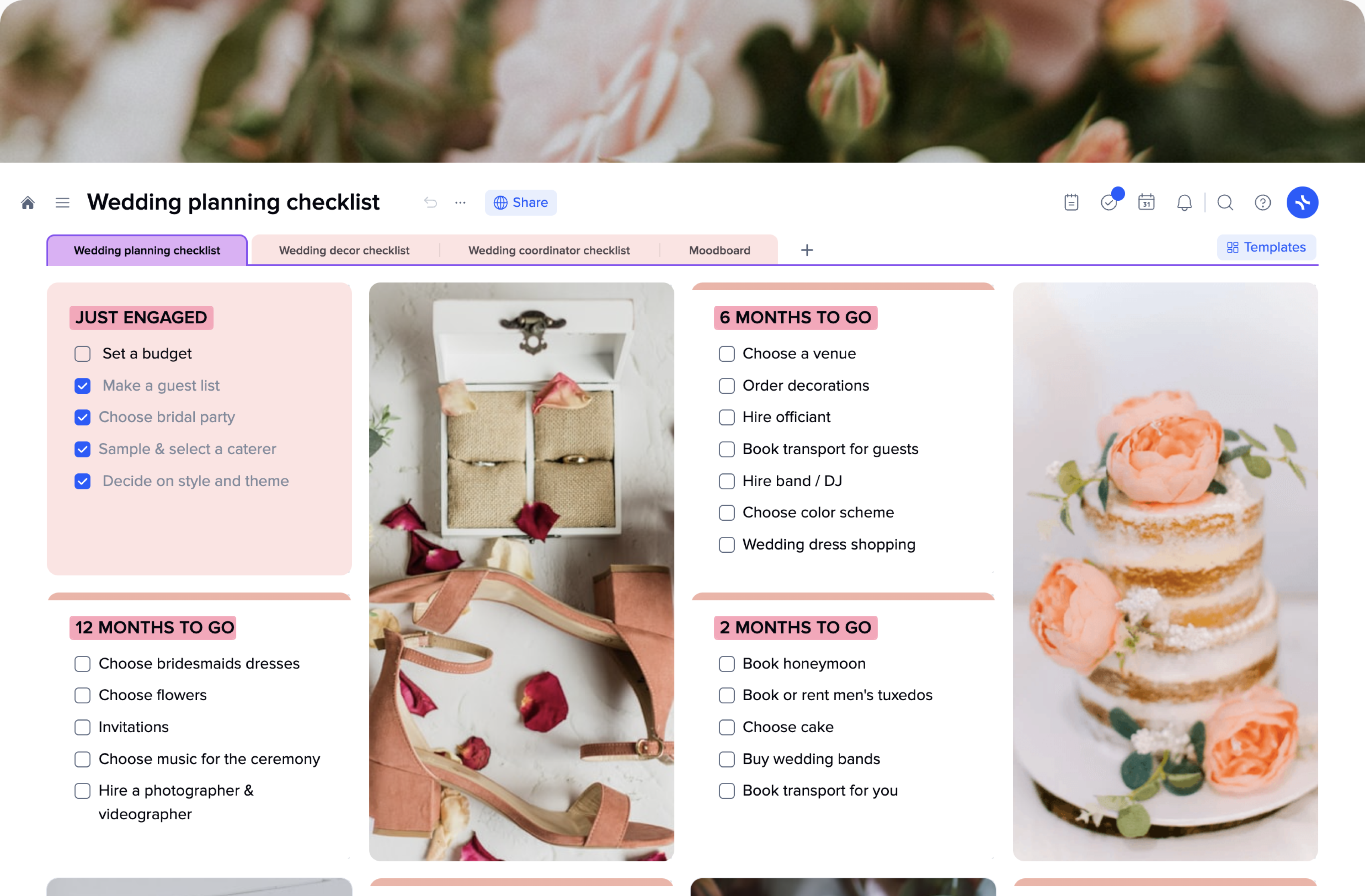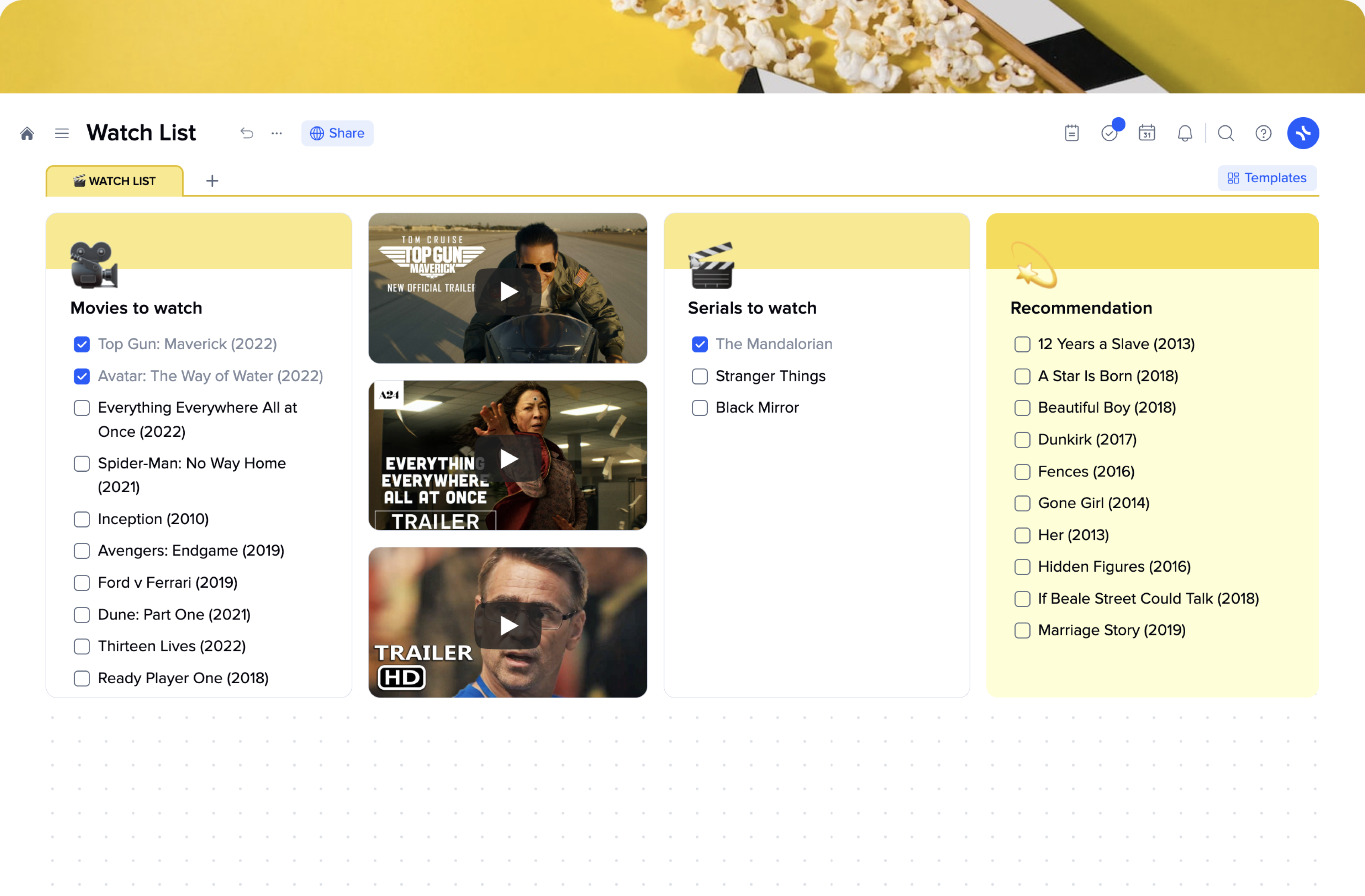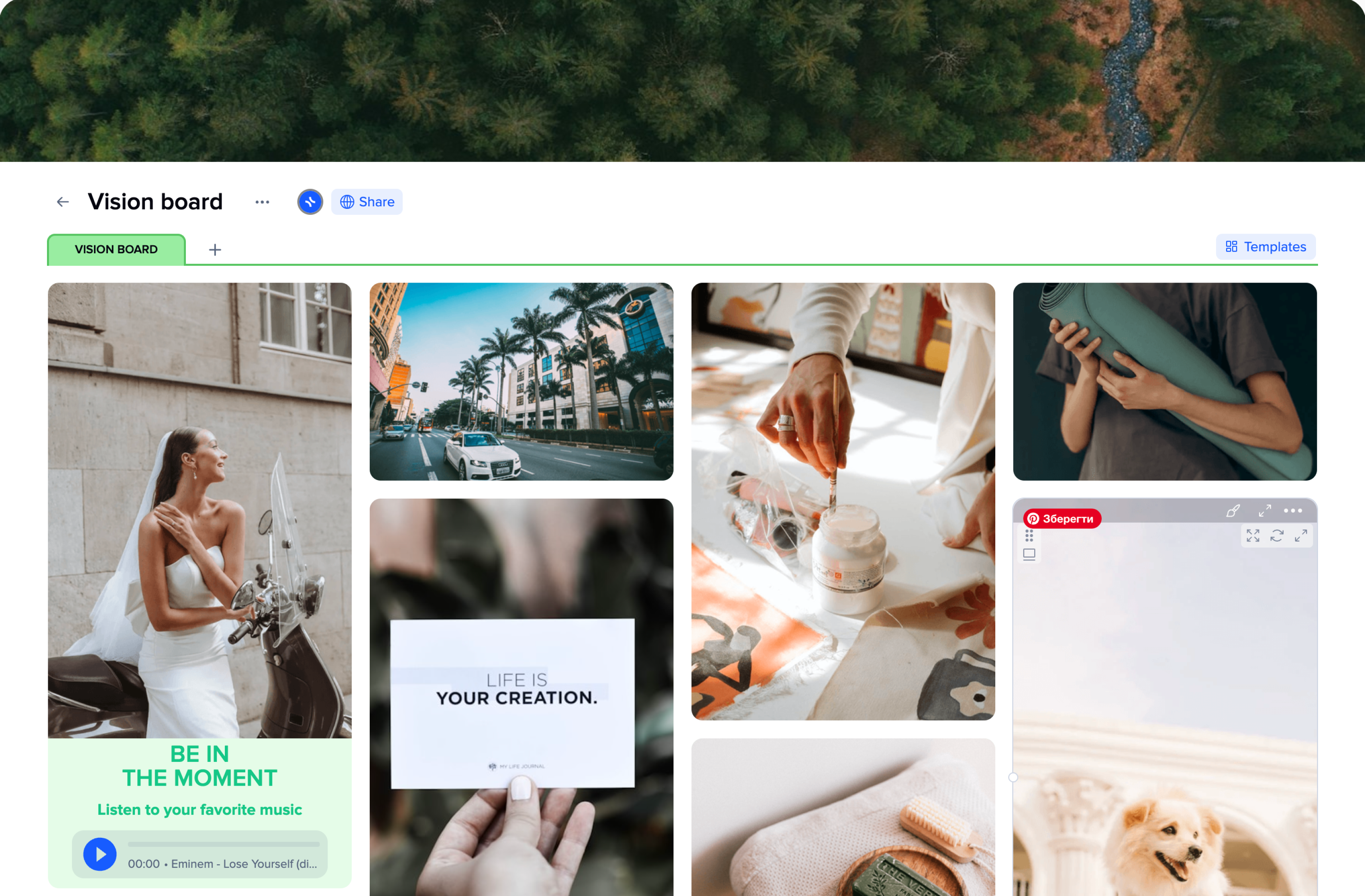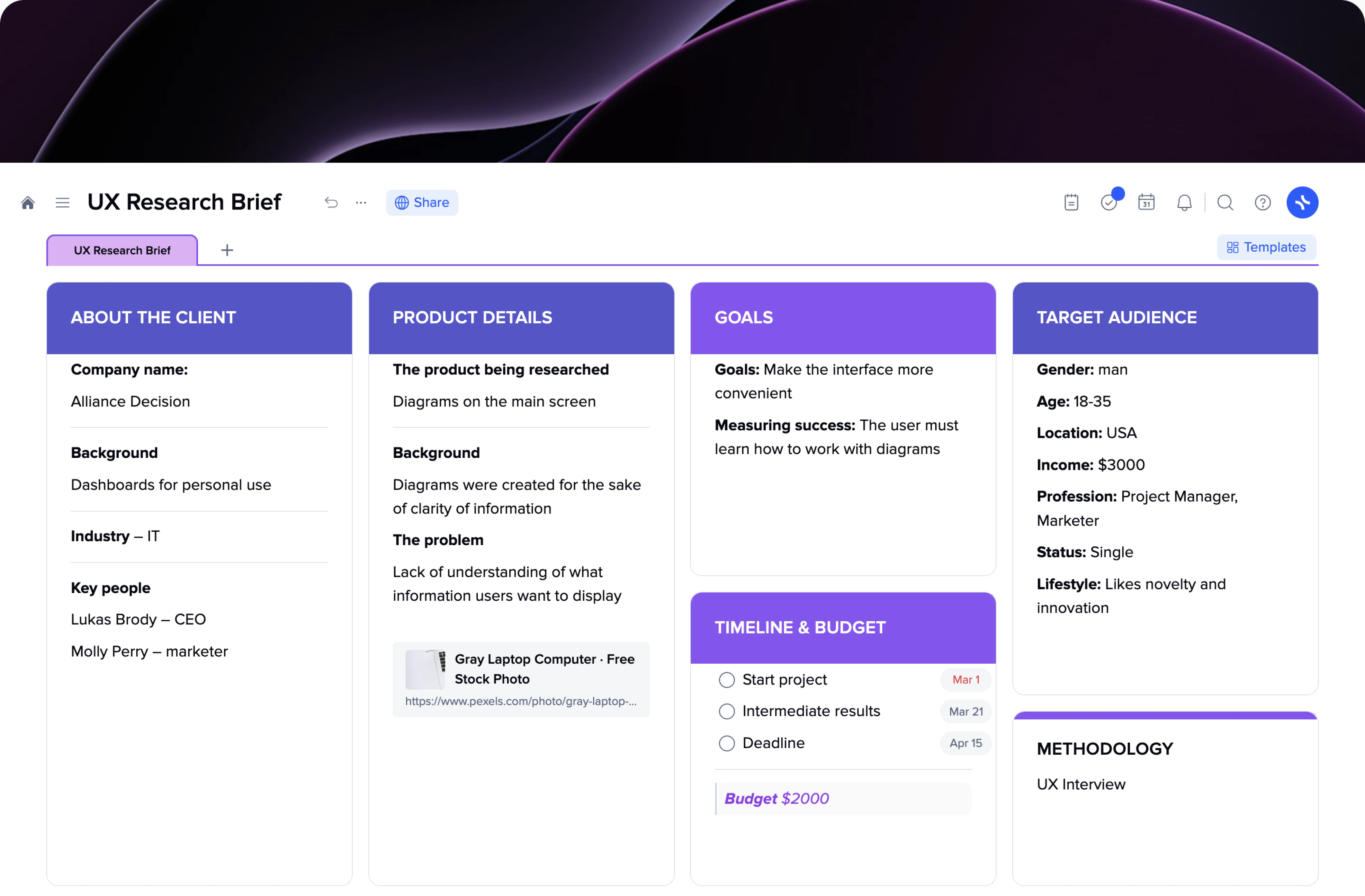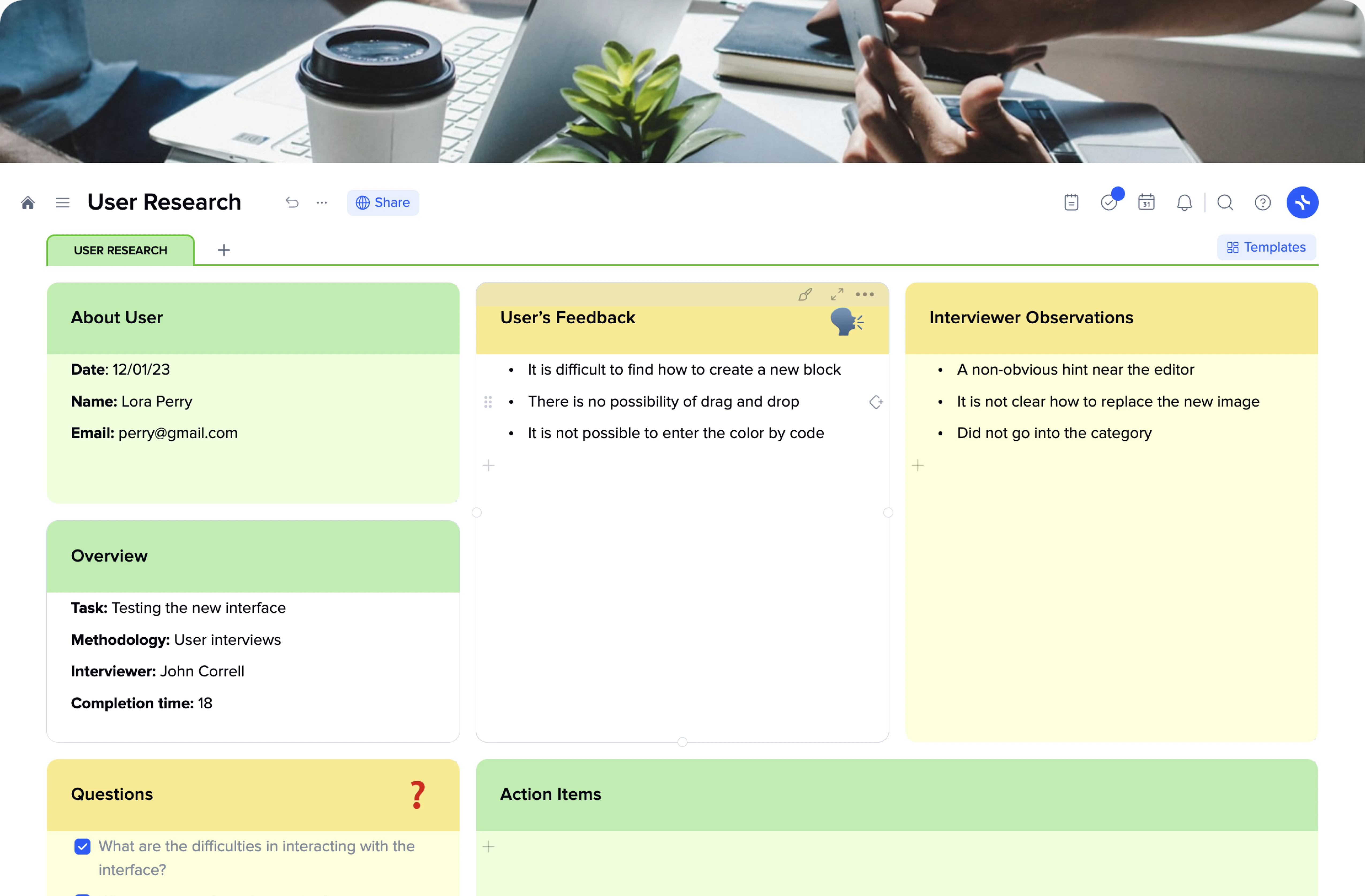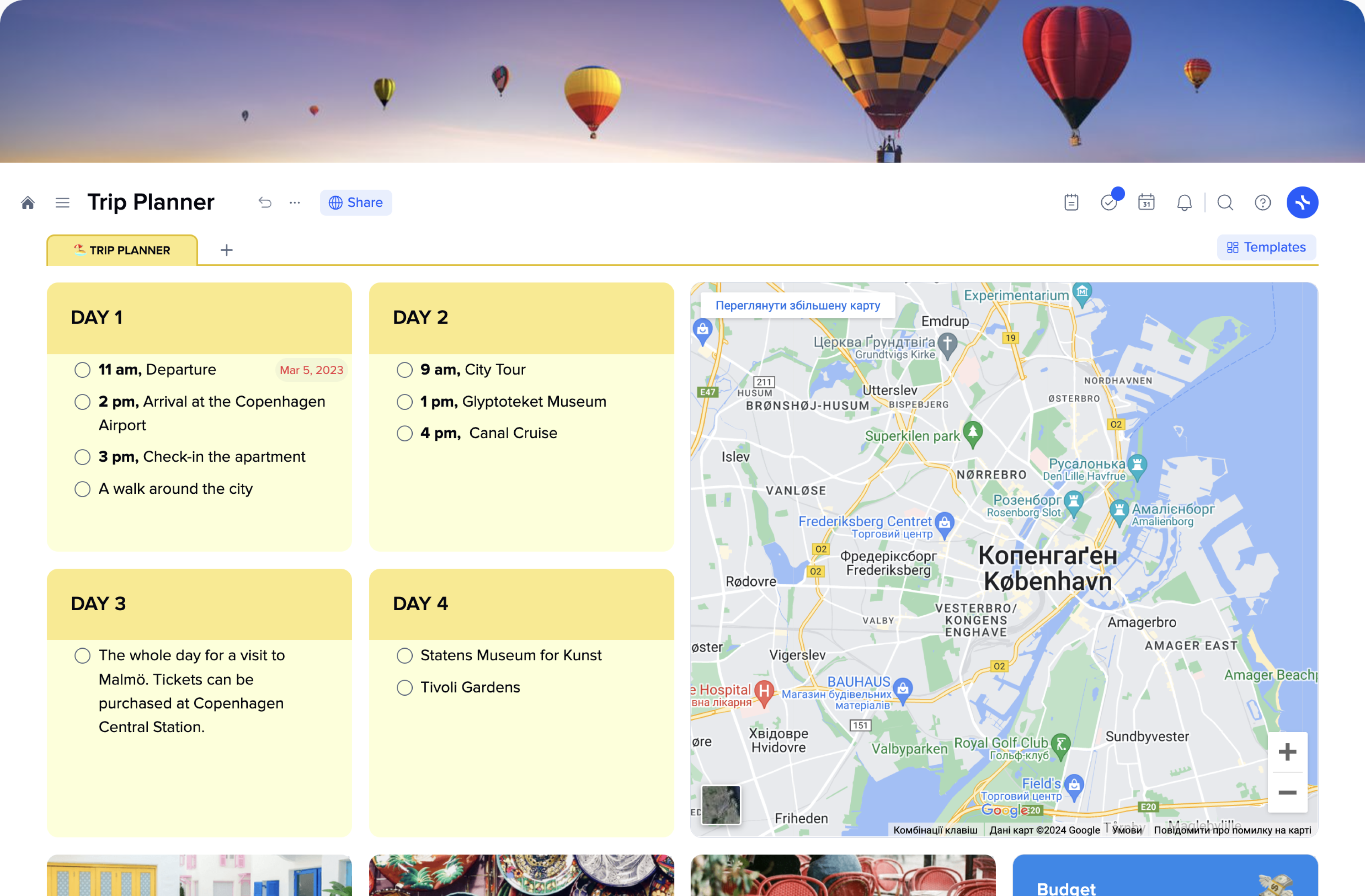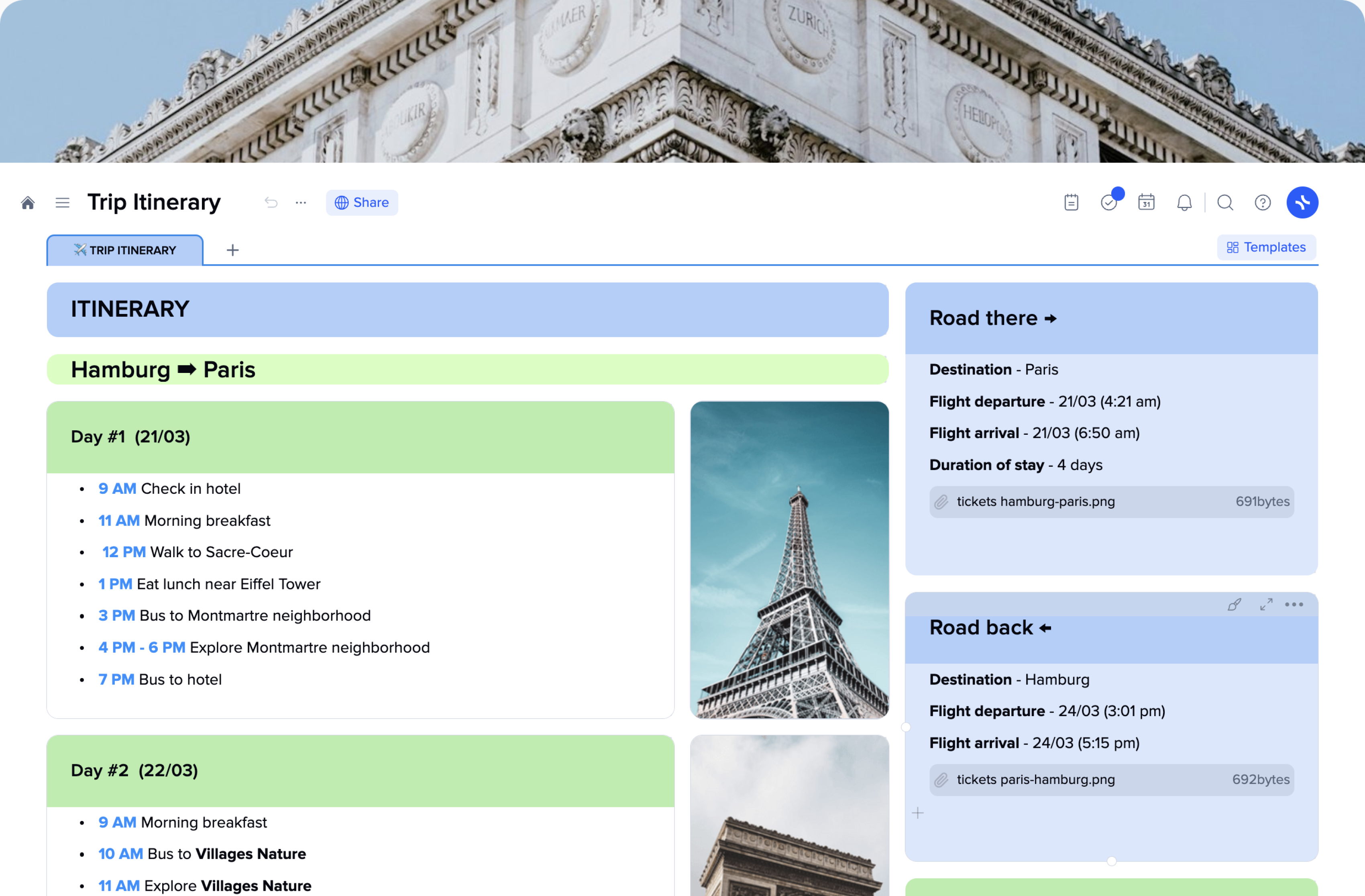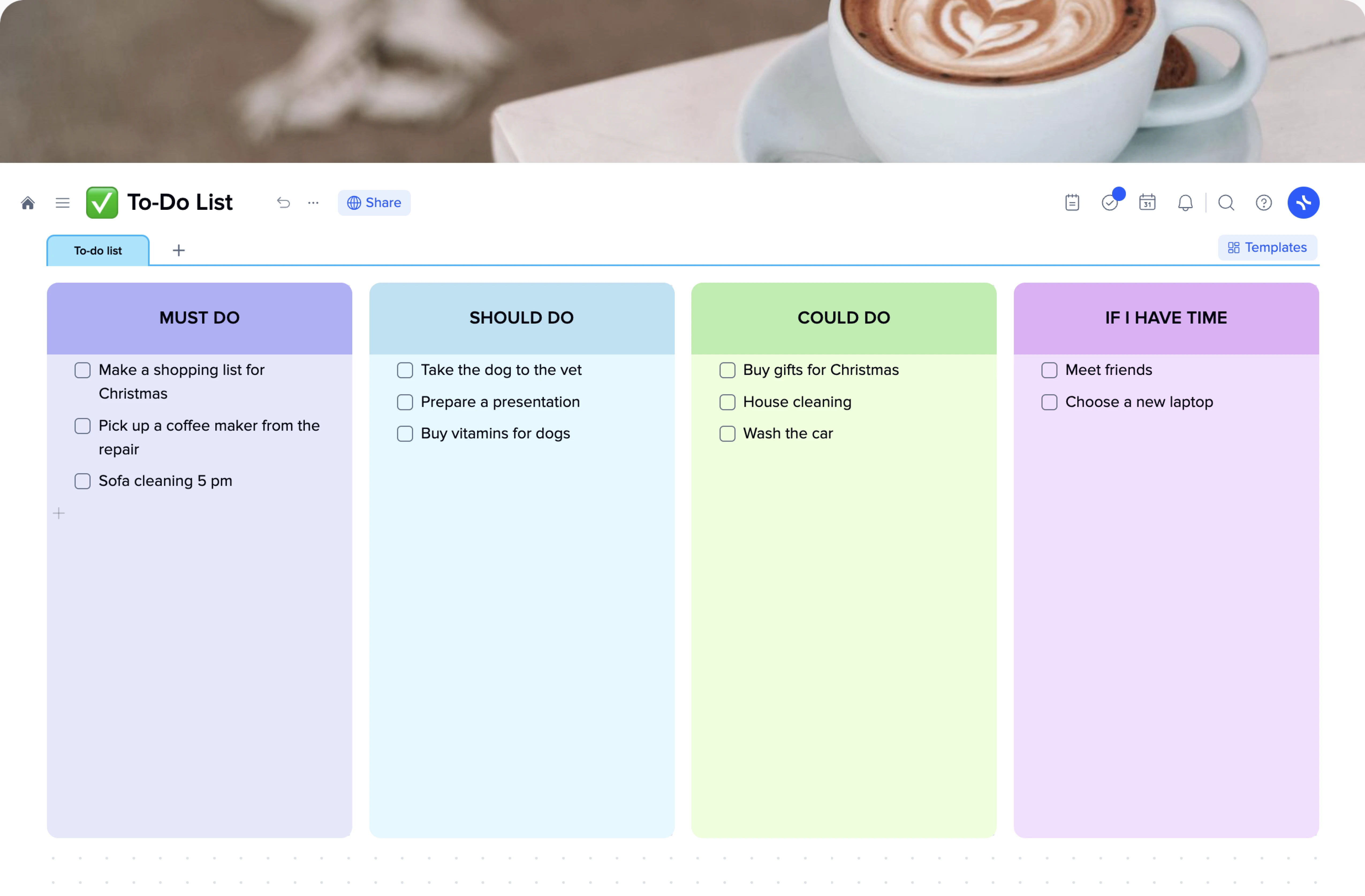Wedding Planning Checklist Template
The wedding planning process takes weeks and months to make that day special for the couple and guests. No wonder planning such an event requires a lot of effort. The bigger the wedding you want, the more time, energy, and money you need to invest.
A free wedding checklist can help you reduce stress, manage your budget, and stay on track with deadlines. Whether having a big fancy wedding or a small backyard wedding, a checklist is your guide through stress-free planning and having a memorable day.
Why is it important to have a wedding checklist?
A wedding checklist or a wedding to-do list template is a special type of checklists templates will coordinate all the arrangements you need to make and ensure you don’t forget anything. A wedding planning checklist provides a structured, itemized to-do list and timeline, making it easy to coordinate all the preparations.
That’s why it’s necessary to find a responsive, flexible, intuitive template with sections for all the details you need to organize by default. Google Sheets, although quite a popular option, lacks most of these features. A printable wedding planning checklist might lack customization options and allow you to insert information only one time.
Wedding Checklist Categories
A good wedding planner covers all the aspects you need to pay attention to organize a wedding day you or your clients want, from choosing the perfect wedding date and engagement ring to making a guest list and deciding on a wedding theme.
Wedding Dress and Apparel
-
Bride’s dress and accessories
-
Groom’s attire
-
Wedding party outfits
Flowers
-
Bridal bouquet
-
Boutonnieres and corsages
-
Ceremony and reception decorations
Announcements
-
Save-the-dates
-
Invitations
-
Thank you cards
Rehearsal dinner
-
Dinner arrangements
-
Participant coordination
Ceremony
-
Officiant
-
Entertainment and music
Reception and Wedding Budget
-
Venue selection
-
Catering and bar services
Honeymoon
-
Destination selection
-
Travel arrangements
-
Packing list
How much time do you have for your wedding planning checklist?
The timeline for your big-day planning checklist will depend on how far in advance you’re starting. Here are three common timelines:
3 month
This condensed timeline is perfect for couples planning a micro wedding or those who prefer a shorter engagement. Focus on essentials like securing vendors, sending invitations, and finalizing details. Plan your budget and start shopping.
6 month
A six-month mark timeline allows for more flexibility in vendor selection and gives you time to personalize your wedding. This is ideal for planning a small wedding or a destination wedding.
12 month
With a full year to plan, you can take a more relaxed approach. This timeline is perfect for larger weddings or those requiring extensive coordination.
If you’re not sure about the engagement length, you can choose not to concentrate on these time frames. You may also use these timeframes as milestones if you plan a big wedding.
Guide to using the Wedding Planning Checklist Template by xTiles
The xTiles Ultimate Wedding Planning Checklist is designed to be a seamless tool for your wedding preparation. You don’t need another complicated thing during this period. So, to make it even easier, here is a short guide on how to use it to your advantage:
-
Start by adding a free wedding checklist to your xTiles workspace.
-
Customize the checklist to fit your specific needs, whether you’re planning a simple wedding or an ultimate wedding extravaganza. Add to-does if there’s not enough for you or delete if there’s too much of them.
-
Then start adding the most important categories to your checklist:
-
Break down larger tasks into smaller, manageable steps to create a detailed wedding “to-do list” that is based on different timelines. This approach will help you to focus on what is important at the moment.
-
Start with the symbol of a wedding – the perfect wedding dress. It requires thorough planning and research, especially when coordinating attire for the entire bridal party.
-
A groom’s tux has to match the dress, making the couple look amazing in all photos and memories. The approach repeats the one for choosing a bride’s dress.
-
The bride’s maids and men of honor must also look great, too. Their outfits must be planned to match the bride and groom and the wedding theme.
-
A bouquet is another element of the bride’s attire that has to be planned and perfectt. A wedding planner will help gather references and choose a flower combination that will work perfectly with the dress.
-
Consider creating a simple wedding website to keep guests informed and organized. This can serve as a central hub for all wedding details and can be included in your save-the-dates.
-
Plan your invitations and “Thank you” cards.
-
Decide on the menu, ensuring it is diverse so everyone can get something they like. The rehearsal dinner is not just a meal but the beginning of the wedding festivities, marking the start of the celebratory events surrounding the big day.
-
Research and choose an officiant (religious leader, judge, or celebrant) and confirm their availability and fees. You will also need to meet with them a few times to discuss the ceremony structure, vows, etc.
-
Another important task is obtaining a marriage license and necessary documents.
-
Then, choose a wedding band and their repertoire for the event. Also, arrange for sound equipment if needed. Additionally, while selecting the perfect band among all the wedding bands that offer their services, take your time to ensure their style represents your love and partnership.
-
Choosing a venue is important, but sometimes they are booked months or even years ahead. Start with your favorite restaurant, and create a list of places you like and check every one of them before making a final decision.
-
Choose between in-house catering or external caterer and Choose wedding cake or dessert options. Schedule tastings and select menu.
-
When the wedding ceremony is planned, it’s time to plan your honeymoon. Start by discussing preferences and the budget. Research potential destinations, make a final decision, and start detailed planning. Additionally, consider preparations for your wedding night, such as breaking in shoes to avoid blisters and packing an overnight bag with essential items for the newlyweds.
-
Book flights or other transportation, reserve accommodations, research and book activities or excursions, Arrange transportation to your destination, get necessary vaccinations or travel documents, and remember travel insurance.
-
Additionally, using a wedding budget spreadsheet alongside your checklist can help you stay organized and manage finances effectively.
-
Assign deadlines to each task. You can view them in a Calendar to conveniently see your schedule. It will help you not feel overwhelmed but excited about what you’re planning.
-
Use the mood board page to plan your wedding style. That is the perfect spot to decide on the dress, colors, flowers, etc.
-
Share the checklist with your partner, wedding planner, or family members to ensure everyone involved is on the same page.
-
Regularly review and update your checklist, crossing off completed tasks and adding new ones as needed.
FAQ
How to start planning a wedding checklist?
Use the free wedding checklist template from xTiles and add it to your workspace. Customize it to fit your wedding, whether big or small, and break down bigger tasks into smaller ones.
Is a wedding planning checklist template suitable for everyone?
Yes, a checklist for wedding planning is suitable for everyone, no matter the size or style of the wedding. xTiles has a flexible template that can be customized to fit any type of wedding, from micro weddings to big fancy weddings, so you can tailor it to your needs.
Does the wedding planning checklist template have to be printed?
No, you don’t have to print your checklist for planning a wedding. xTiles has a digital template that’s customizable, shareable and updatable. This digital format is more flexible and accessible than a printable one, so you can edit and collaborate in real-time.

